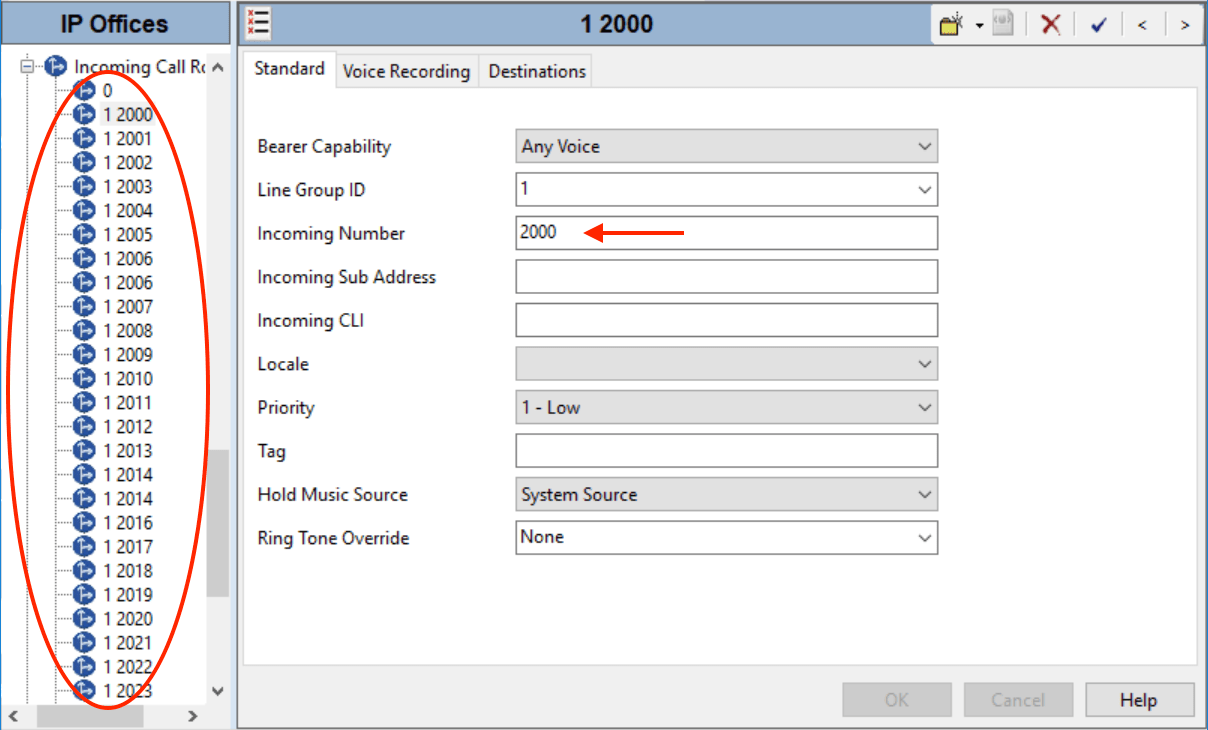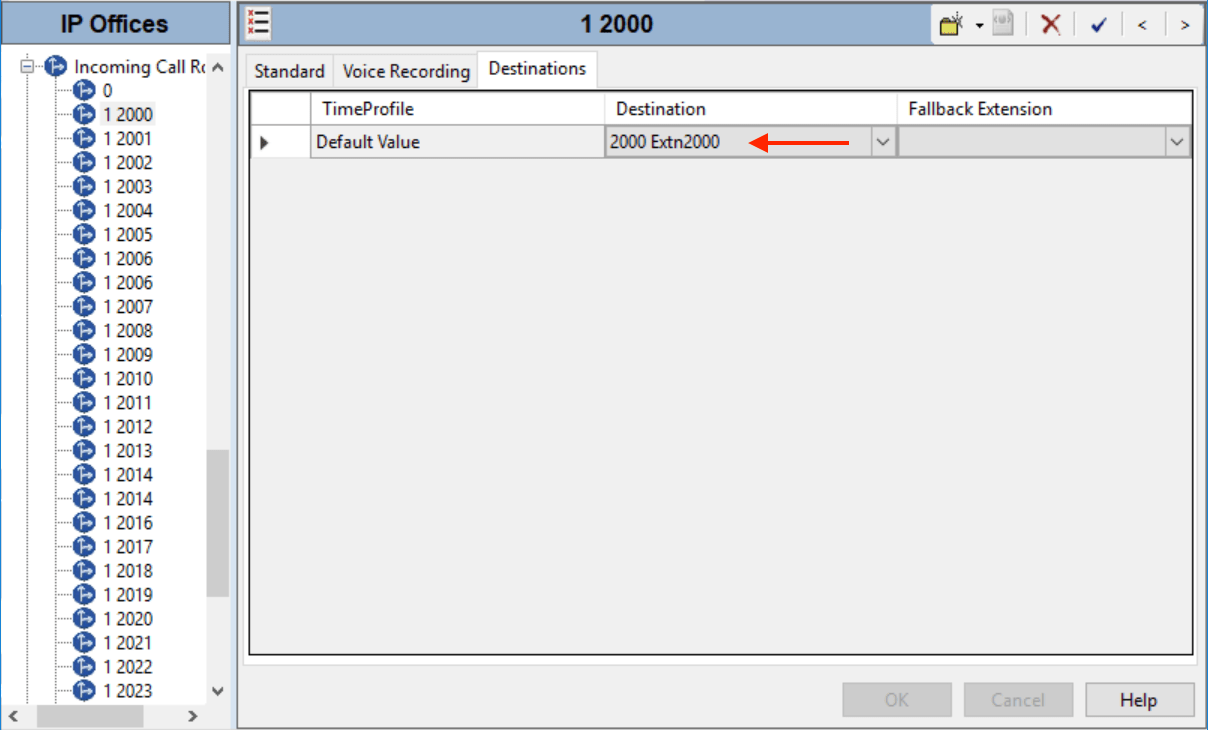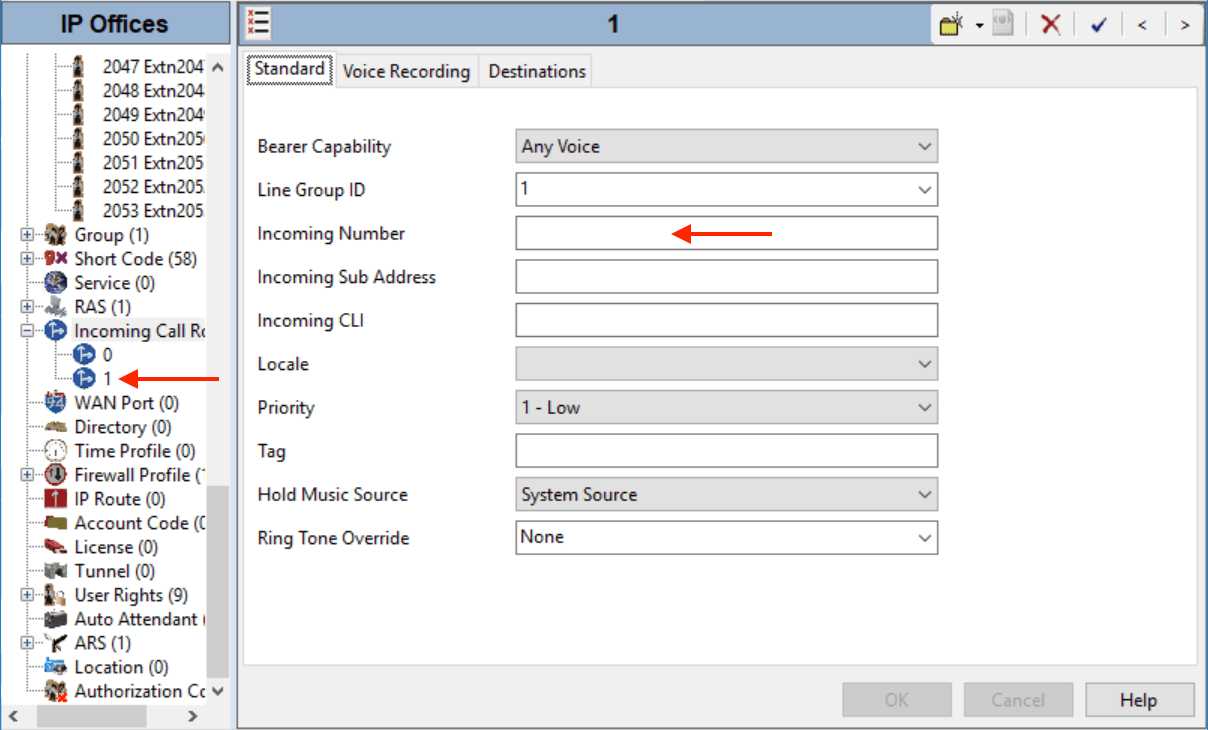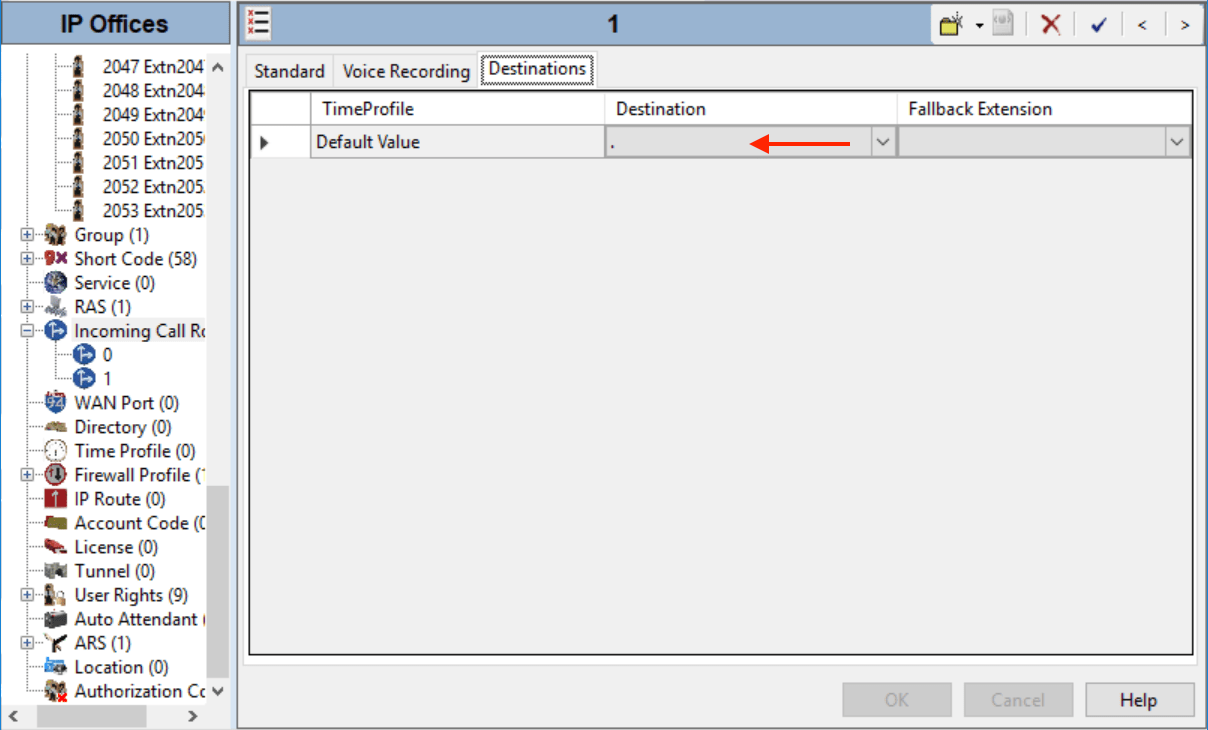DID Incoming Call Route
When building SIP or PRI tie trunks, incoming DID can be done a couple of ways.
If the incoming digits are compatible with your dial plan (they should be)...
Don't do it like this:
- Incoming call route for each extension, with the same line group ID
- Incoming Number: received DID digits
- Destination: assign the extension to call
Do it like this:
- One incoming call route for line group
- Incoming Number: blank *
- Destination: a singe fullstop (wildcard)
* May depend on the received digits, XXXX and # may be required if the digit string is longer. See below for options:
Options:
Incoming Number:
- Default = Blank (Match any unspecified)
Matches to the digits presented by the line provider. A blank record matches all calls that do not match other records. By default this is a right-to-left matching. The options are:
*= Incoming CLI Matching Takes Precedence–= Left-to-Right Exact Length MatchingUsing a - in front of the number causes a left-to-right match. When left-to-right matching is used, the number match must be the same length. For example -96XXX will match a DID of 96000 but not 9600 or 960000.
X= Single Digit WildcardUse X's to enter a single digit wild card character. For example 91XXXXXXXX will only match DID numbers of at least 10 digits and starting with 91, -91XXXXXXXX would only match numbers of exactly 10 digits starting with 91. Other wildcard such as N, n and ? cannot be used.
Destination:
.matches the Incoming Number field. This can be used even when X wildcards are being used in the Incoming Number field.#matches all X wildcards in the Incoming Number field. For example, if the Incoming Number was -91XXXXXXXXXXX, the Destination of # would match XXXXXXXXXXX- Text and number strings entered here are passed through to system short codes, for example to direct calls into a conference. Note that not all short code features are supported.
- If necessary, quote marks can be used to stop characters in the destination string being interpreted as special characters.



